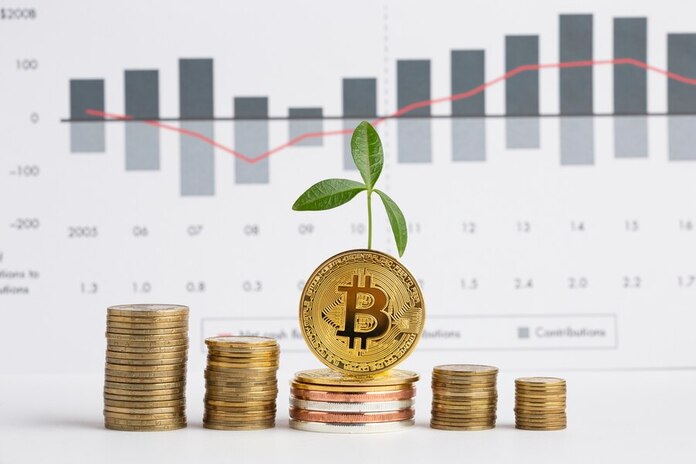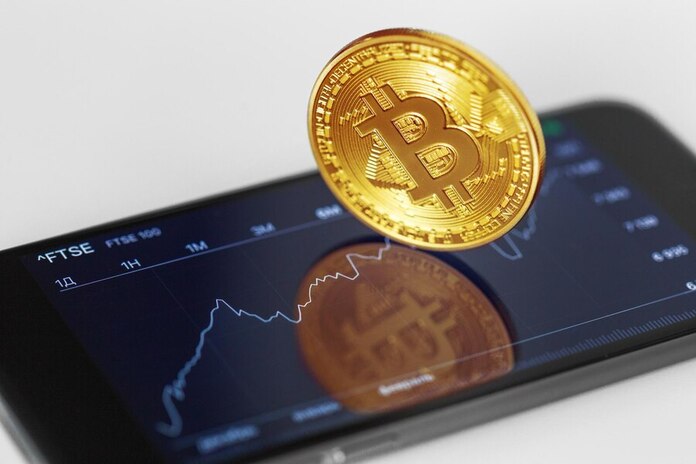Shift in Crypto Sentiment Suggests Potential Bitcoin Price Reversal
This post was originally published on this site

Social media indicators are signaling a shift toward bearish sentiment among cryptocurrency enthusiasts regarding the future trajectory of Bitcoin’s price.
Historically, periods of bearish sentiment in the crypto community have often coincided with market bottoms, reflecting a sentiment that aligns with American poet and novelist Charles Bukowski famously asserted that the masses are consistently mistaken, and true wisdom lies in taking actions divergent from the crowd.
This principle applies to Bitcoin as well, as the current prevalence of bearish sentiment suggests the possibility of a reversal in the ongoing sell-off of BTC prices.
Blockchain analytics platform Santiment noted a decrease in mentions of “bull market” or “bull cycle” on crypto social media platforms since late March, coupled with a consistent rise in references to “bear market” or “bear cycle.” This shift in sentiment may indicate a possible reversal in Bitcoin’s price trajectory.
Santiment’s Social Trends indicator, which monitors discussions across platforms like Telegram, Reddit, and 4Chan, has observed a decrease in “buy the dip” mentions, indicating waning hopes among retail investors for a quick recovery and continued bull run.
Factors such as diminishing expectations of Federal Reserve interest-rate cuts, heightened geopolitical tensions, and the timing of U.S. tax payments have contributed to bitcoin’s recent price decline, which saw a 14% slide this month.
Despite these challenges, bitcoin’s blockchain is set to undergo its fourth mining reward halving, reducing the per-block BTC emission by 50% to 3.125 BTC. While some analysts, including JPMorgan, have warned of a potential further decline in prices following the event, the overall consensus remains bullish for Bitcoin’s long-term prospects.
Featured Image: Freepik
Kraken Bolsters U.S. Presence with Acquisition of TradeStation Crypto
This post was originally published on this site

Cryptocurrency exchange Kraken has acquired TradeStation Crypto, the digital asset-focused division of online brokerage TradeStation, to expand its regulatory licensing and presence in the United States.
TradeStation Crypto, based in Florida, has obtained money transmitter and other regulatory licenses across most U.S. states in recent years. Kraken’s acquisition of TradeStation Crypto marks a strategic step to accelerate its growth and introduce new product offerings in the U.S. market.
A spokesperson for Kraken confirmed the acquisition, stating that it aligns with the company’s objectives to enhance its footprint in the U.S. market. However, the spokesperson declined to disclose the financial details of the transaction.
The acquisition comes after TradeStation Crypto faced regulatory challenges, including a $3 million settlement with the U.S. Securities and Exchange Commission over a lending service. After this incident, TradeStation’s parent company withdrew from the cryptocurrency space.
TradeStation Crypto gained attention for its involvement in Miami Mayor Francis X. Suarez’s initiative to establish the city as a crypto hub. Notably, the company commissioned the Miami Bull, an 11-foot, 3,000-pound statue unveiled by Mayor Suarez in early 2022.
In addition to its U.S. expansion, Kraken has been making strides in the European Union. The exchange recently announced the acquisition of Netherlands-based crypto firm BCM and secured virtual asset service provider licenses across the region as part of its ongoing growth strategy.
Featured Image: Freepik
Bitcoin Maintains Position Above Key $60,000 Threshold
This post was originally published on this site

Bitcoin maintains its position above the significant threshold of $60,000, marking a resurgence amid recent dips that saw it hit six-week lows. Short-covering activity has been notably active, contributing to this upward trend.
Despite recent corrections, Bitcoin continues to assert its dominance within the cryptocurrency market, attracting investors who are turning away from riskier currencies. Additionally, a slowdown in US 10-year treasury yields has provided further support and bolstered sentiment towards cryptocurrencies.
Today, Bitcoin saw a notable rally of 2.9% on Bitstamp, reaching $63,046 from a session low of $60,830. This recovery comes after a 4% decline on Wednesday, the second drop in three days, when it dipped to $59,672 amidst turbulence in Wall Street markets.
The collective market value of cryptocurrencies surged by $20 billion today, surpassing $2.375 trillion, buoyed by gains in Bitcoin and Ethereum.
Bitcoin’s dominance has strengthened as other AI-linked cryptocurrencies experienced declines in recent weeks. Its market share has risen to 55%, marking an increase of 1.35% last week and 2.5% in March, largely due to an influx of new investments.
Anticipation surrounding Bitcoin’s upcoming halving event has driven Google searches to record highs, surpassing the interest levels seen during the 2020 halving.
Meanwhile, US 10-year treasury yields have receded from their recent five-month highs, falling to 4.696%. This decline has provided support for non-yielding assets like Bitcoin.
As the market awaits further guidance on US interest rates, Crypto.com‘s CEO anticipates a wave of selling leading up to the halving event. However, in the long run, this event is expected to have a positive impact and add value to the cryptocurrency market.
Featured Image: Freepik
Crypto Crowd’s Pessimistic Shift Suggests Potential Bitcoin Rebound
This post was originally published on this site

Recent data from analytics firm Santiment indicates a notable shift in sentiment within the crypto community, signaling a growing bearish inclination.
The sentiment within the crypto community regarding the trajectory of Bitcoin’s price appears to be turning bearish, according to metrics derived from social media activity. This trend, historically observed, often coincides with market bottoms.
As American poet and novelist Charles Bukowski famously remarked, “The masses are always wrong. Wisdom is doing everything the crowd does not do.” This adage holds true in the realm of cryptocurrency, where a burgeoning bearish sentiment towards Bitcoin (BTC) suggests that the current downtrend may be nearing its end.
Santiment, a blockchain analytics platform, noted in a recent market insights report that prices tend to move inversely to the expectations of the majority of traders. According to their analysis, the market could potentially bottom out either just before or shortly after the upcoming halving, anticipated within the next two days.
Santiment’s Social Trends indicator, which monitors discussions across platforms like Telegram, Reddit, and 4Chan, has revealed a decline in mentions related to “bull market” or “bull cycle” since late March. Conversely, there has been a steady increase in references to “bear market” or “bear cycle.”
The decline in mentions of phrases like “buy the dip” indicates a waning sense of optimism, known in crypto circles as “hopium,” among retail investors. Historically, such a decline has often signaled the conclusion of downtrends.
Bitcoin has faced various pressures this month, including diminishing prospects of Federal Reserve interest-rate cuts, escalating geopolitical tensions, and U.S. tax payment deadlines. These factors have contributed to a 14% decline in its price, with the leading cryptocurrency briefly dropping below $60,000 before rebounding to around $61,200 at the time of writing.
With Bitcoin’s blockchain set to undergo its fourth mining reward halving, reducing the per-block BTC emission by 50% to 3.125 BTC, concerns about a further price decline have been raised by some analysts, including those at JPMorgan. However, the prevailing consensus remains bullish over the long term.
Featured Image: Freepik
Decade-Old Dogecoin Wallet Misses Out on Millions
This post was originally published on this site

In the volatile world of cryptocurrency, timing is everything. A recent example highlights the missed opportunities faced by some traders, particularly one long-time Dogecoin investor.
This investor, whose wallet had been accumulating DOGE since 2013, made a crucial decision to sell their tokens in late 2023, just before a significant price surge. Let’s delve into the details.
Initially investing a modest $146.87 in late 2013, the wallet amassed over 274,000 DOGE. Throughout 2014, further investments totaling around $5,000 were made, culminating in a final investment of $195.61 in early 2015.
During the subsequent years of dormancy, DOGE experienced a meteoric rise, particularly in 2021, fueled by social media hype and Elon Musk’s endorsements. At its peak, the wallet’s holdings soared to over $4 million.
However, the crypto market downturn in 2022 and 2023 saw DOGE’s value plummet by over 90%. Despite signs of recovery, the wallet’s owner chose to liquidate all tokens on Oct. 28, 2023, generating proceeds of $370,000.
Unfortunately, this timing proved suboptimal, as DOGE rallied soon after. Year to date, DOGE has surged over 60%, and since the sale date, it has soared more than 120%, reaching a peak of 23 cents in 2024.
Had the wallet held onto its tokens, it would have garnered an additional $450,000 in gains. Selling at the 2024 peak could have resulted in total proceeds of $1.25 million, underscoring the missed opportunity for significant profit.
Featured Image: Freepik
Aptos Partners with Tech Giants for DeFi Integration
This post was originally published on this site

Aptos Labs, creators of the Aptos layer-1 blockchain, announced a strategic collaboration with Microsoft(NASDAQ:MSFT), Brevan Howard, and South Korean telecommunications giant SK Telecom(NYSE:SKM) to provide institutional access to decentralized finance.
The partnership introduces Aptos Ascend, a comprehensive suite of institutional solutions facilitating regulatory compliance, privacy in transactions and accounts, and streamlined know-your-customer processes.
In response to the growing demand for DeFi integration among large institutions, various layer 1 blockchain platforms, including Avalanche and NEAR, have pursued similar enterprise partnerships.
Utilizing Microsoft Azure and Azure OpenAI services, Aptos Ascend leverages cutting-edge technology to deliver financial solutions.
Brevan Howard will leverage its industry expertise to explore digital asset management opportunities for institutions and their clients, with support from Boston Consulting Group in implementing these solutions.
Mo Shaikh, co-founder and CEO of Aptos Labs, highlighted the collaborative effort’s goal of providing financial institutions with a secure, compliant, and scalable gateway to DeFi on the Aptos platform.
Aptos previously announced its utilization of Microsoft’s infrastructure to introduce innovative AI and blockchain-powered solutions, such as the Aptos Assistant chatbot.
Founded by former Meta(NASDAQ:META) employees, Aptos Labs continues to innovate at the intersection of AI and blockchain technology.
Featured Image: Freepik
Fantasy Crypto Trading Card Game Debuts on Blast Mainnet with Points Airdrop
This post was originally published on this site

Fantasy, a crypto trading card game allowing users to trade crypto influencers as cards, has launched on Blast mainnet. The project garnered $600,000 in funding in February.
Fantasy, the crypto trading card game, is now live on Blast mainnet after a successful testnet phase. Users can trade crypto influencers portrayed as trading cards on the app, with influencers earning a 1.5% cut each time their cards are traded.
The project secured $600,000 in funding from Alliance DAO, Manifold Trading, Fabric Ventures, and angel investors in February. Notable angel investors include Santiago Santos from former ParaFi Capital, Bryan Pellegrino from LayerZero Labs, and the pseudonymous NFT influencer known as “money.”
Fantasy is also offering a points airdrop based on activity on social media platform X and on-chain metrics from several blockchains, including Blast.
During the testnet phase, Fantasy gained significant traction with influencers like Ansem driving interest. Ansem’s trading cards generated substantial testnet ETH trading volume, resulting in rewards of testnet ETH. The project’s success on mainnet will depend on its ability to sustain similar momentum.
Additionally, Fantasy allows users to participate in competitions using five of their cards. During the testnet phase, over 23,800 users engaged in such competitions, with a total of 75,000 registered users.
Fantasy operates on Blast, a Layer 2 network on Ethereum launched on mainnet in February. Blast aims to offer a native-yield model for ether and stablecoins, providing 4% interest for ether and 5% for stablecoins. The network was developed by Tieshun Roquerre, founder of the NFT marketplace Blur.
Featured Image: Freepik
Solana Betting Platform Parcl Sees 40% TVL Drop Following Airdrop
This post was originally published on this site

Solana-based decentralized betting platform Parcl has experienced a significant decline in total value locked (TVL), losing approximately 40% since early April, as reported by DefiLlama data. Other Solana-based airdrop tokens, including W and TNSR, have also witnessed notable declines in value.
Since its airdrop snapshot on April 3, Parcl has witnessed approximately $74 million exiting the protocol, marking a sharp decline from $184.5 million to $110.69 million in TVL within about two weeks. The platform distributed native Parcl (PRCL) tokens to eligible users following the snapshot, with its initial TVL dropping significantly post-airdrop.
The airdrop distributed 80 million PRCL tokens initially valued at $0.8255 each, but the token’s value swiftly plummeted to a low of $0.45 before rebounding to $0.5294 at the time of publication. Launched in February 2023, Parcl enables users to trade on assets reflecting major city housing markets through decentralized betting.
While Parcl did not respond to inquiries from The Block, the mass withdrawal from the platform coincides with weak performances of other Solana-based airdropped tokens. For instance, Wormhole’s W token has seen a 56.4% decline since its debut, and Tensor’s TNSR token has lost half its value post-airdrop.
Despite these setbacks, Solana projects continue to conduct airdrop events, with decentralized exchange Drift and Zeta Markets announcing plans for token distributions. Solana itself has grappled with congestion issues in recent weeks, likely exacerbated by spam transactions, although updates have been deployed to address these challenges.
CoinMarketCap data indicates an 18.8% decline in the price of Solana over the past seven days, mirroring a broader downturn in the crypto market, with the GMCI 30 index, representing a selection of the top 30 cryptocurrencies, falling 13.79% amid investor caution following geopolitical tensions.
Featured Image: Freepik
Bitcoin Halving: Impacts and Uncertainties
This post was originally published on this site

In just three days, Bitcoin will undergo its next halving event, a significant occurrence in its price history. Scheduled approximately every four years, this event, ingrained in the cryptocurrency’s source code, aims to introduce anti-deflationary features to Bitcoin. While past halvings have contributed to price appreciation, the dynamics this time around might differ. Here’s what to consider.
At present, each block mined rewards miners with 6.25 new Bitcoins. Following the halving, this reward will halve to 3.125 BTC per block. In theory, this reduction should alleviate selling pressure on Bitcoin. Miners, who receive new BTC as rewards, often sell these tokens promptly, potentially decreasing daily token sales post-halving. This scenario could create a demand-supply imbalance, potentially driving prices upward. However, the market’s response is far more intricate.
Past halvings sparked debates and uncertainties. Some argued that market anticipation already factored in the halving’s effects, undermining its impact. However, history proved otherwise. Preceding each of the last three halvings, Bitcoin experienced minor price surges, followed by significant increases in the ensuing year, leading to new highs.
While this trend prevailed in the past, it’s not guaranteed for this halving. With previous halvings and market cycles informing investors, forecasts might be more accurate, potentially altering the usual cycle dynamics. Notably, BTC reached new all-time highs before the halving for the first time, possibly indicating investors pricing in the event’s impact beforehand, possibly influenced by factors like ETF approvals.
In this unprecedented market cycle stage, various outcomes are plausible, challenging investors’ ability to predict BTC’s trajectory post-halving. Only time will reveal the true impact of the upcoming halving on Bitcoin’s price.
Featured Image: Freepik




